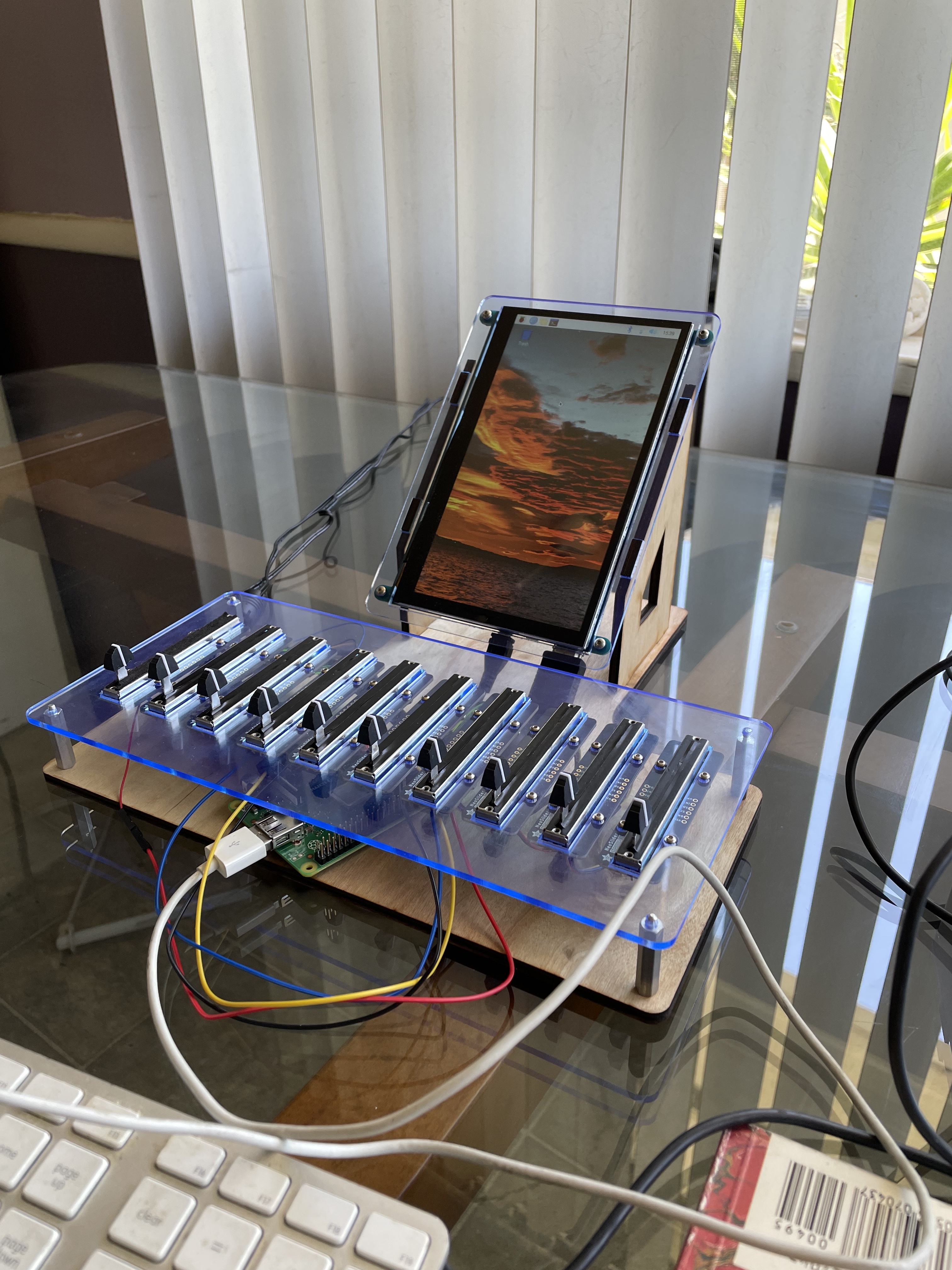OpenSauce 2023: Collaborative Art-Making Machine
In July 2023, Evan and I were fortunate to be included as exhibitors at OpenSauce 2023 in San Francisco. The event was really great, and featured a huge range of interesting makers and builders doing strange and fascinating things with technology1.
Our exhibit built on our creative practice working with CNC drawing machines as 90percentart. In addition to sharing off some of our existing work, we built an interactive tool for collaborative generative art-making with attendees.

Built with RGB slide potentiometers from adafruit (wired up via I2C), a Raspberry Pi 3a+ and some laser cut parts, the tool allowed users to manually explore the parameter space & aesthethic possibilities of a simple generative art algorithm we coded in python.


When users found a design they liked, they could press a button to send it to us for live drawing on our CNC pen plotter at the conference. The resulting draw was theirs to keep.
Overall, the build was a great way to engage and collaborate with conference attendees in our style of art-making; it was a lot of fun to watch folks (especially kids) experimenting with different design parameters and watch the machine draw.
Find all the code for the project on GitHub here!
Reflection
I think what I find interesting about this project from a conceptual perspective is the way that it expresses a kind of flattening of the hierarchy of creative “expertise”. In much conventional art, there is a kind of uni-directionality: the artist has “something to say” (an idea, a feeling, an aesthetic direction), and uses their mastery of the techinical tools of their medium (paint, words, photos, whatever) to speak it to an audience who is likewise positioned in a passive, receptive role as listener and receiver. While our project was very simple, I like the way it breaks down this speaker/audience division. An artistic “vision” is still present (e.g. in the design of the whole collaborative system as well as the visual algorithm); however, the exact articulation of it is now determined in collaboration with an audience who is far more active.
This kind of artist/audience interaction is certainly possible in a range of creative media2; however, it seems particularly available for exploration in the generative art context, where new designs can readily be created/rendered/shared /materialized. Several recent generative art projects have explored this direction; salient examples include QQL from Tyler Hobbs and Dandelion Wist, and Fluint from Ean Golden and team3.
These are both interesting projects that I recommend checking out. In each, the artist’s role is repositioned as the designer of a socio-technological system – a set of building blocks that include large elements of randomness (computationally-mediated in the case of QQL; physically-mediated in the case of Flunit) – which the audience engages with dynamically to make something new. There’s an interesting interview with Hobbs discussing QQL here that touches on some related themes. In the discussion, Hobbs makes a good counterpoint to my “uni-directional” story above. In his words:
Creation has always been a multi-party story, and a lot of artists are familiar with the concept that the work is finished by the viewer.
And also:
The creator is never simply placing something into the viewer’s mind, they’re offering a suggestion and a starting point which the viewer completes. Projects like QQL make that much more explicit.
While this is a good couterpoint, the ultimate idea is still similar, in that these projects offer the viewer a much more explicit role in the creative process.
This “stepping back” of the artist also resonates with the broader movement towards “long form” generative art (e.g. ArtBlocks), where the artist gives up the right to explicit “curation” of which outputs to share from a generative algorithm.
Getting even more conceptual, I think there are strong parallels with anarchist thought here, and a broader set of themes I am interested in around modularity and ownership in technological design – see e.g. the discussion of “bottom-up design” here. Broadly, the idea is that designers and artists have an important choice about how strongly to impose their views about what a creative artifact is or ought to be used for. And further that – at least in some settings – there are some strong arguments (both practical and descriptive) for preferring a more humble, bottom-up, interactive, design mode that does not impose the creator’s views so strongly.
Footnotes
-
Our booth was right next to our buddy Russ, who makes cool 3d-printed pottery. Check him out! Some of Evan’s colleagues were also at the event showing off BattleBot Chomp’s impressive walking mechanism. ↩
-
One personal example that comes to mind for me is this “Community Sketchbook” project near me in Allston, MA, which variously invites community members to participate in the design of the mural. Another random example that comes to mind is a project like Abramović’s The Artist is Present, which has something of this flavor. ↩
-
Our unreleased “Artproofs” project is also in this spirit. Maybe we will finish it someday! ↩